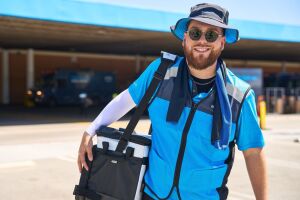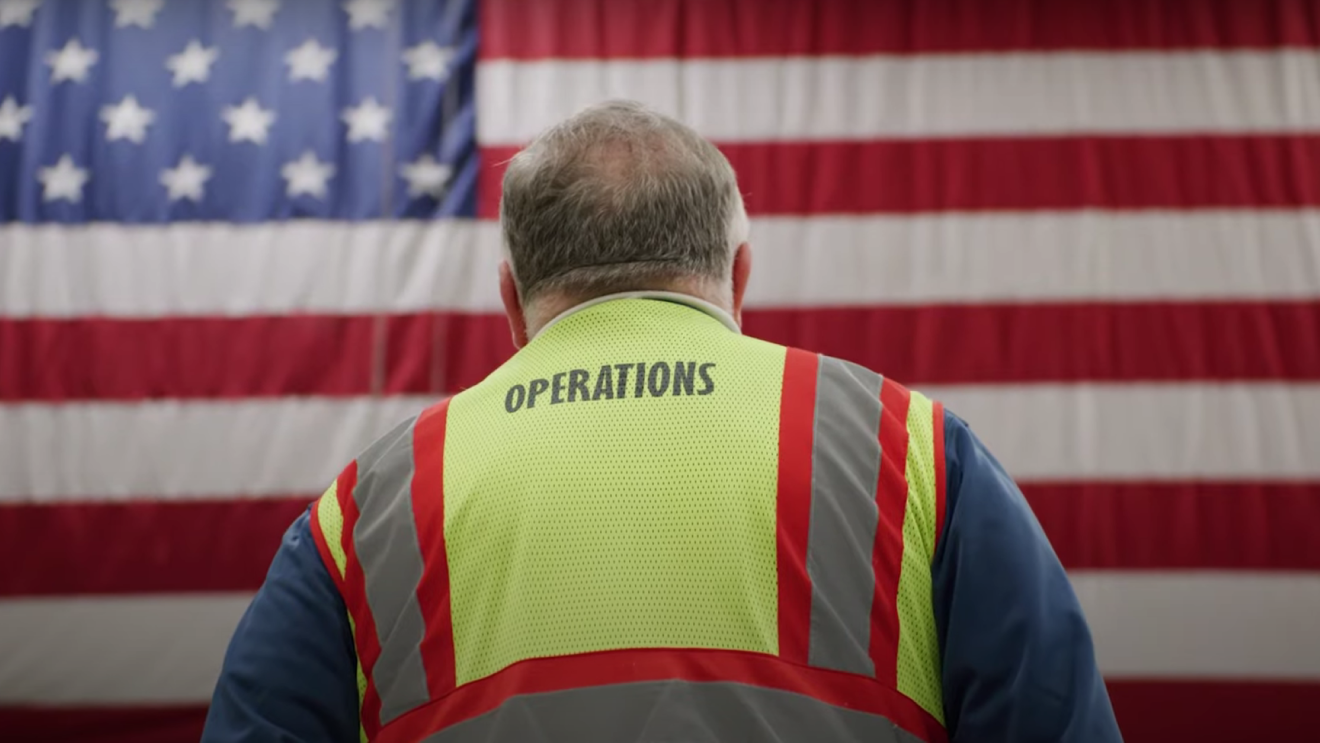The safety of our employees is our top priority, and we wanted to share an update on our programs and progress. We have made, and continue to make, significant investments to ensure our workspaces are safe and improve safety outcomes for our employees. From 2019-2022, we invested $1 billion in safety projects and initiatives (unrelated to COVID-19) across Amazon, and in 2023 alone we have committed $550 million to our safety efforts. We also offer our roughly 750,000 employees in the United States a starting average wage of $19 per hour (well above the federal minimum wage of $7.25) and comprehensive benefits. These benefits include health care from day one; up to 20 weeks paid parental leave; 401(k) with a 50% company match; free skills and career advancement training; and our Career Choice program, which prepays tuition for continuing education courses, high school diplomas, GEDs, bachelor’s degrees, and English as a Second Language certifications. We’ve also committed $1.2 billion to provide 300,000 employees with access to education and skills training programs—including college tuition for front-line employees—through 2025 as part of Amazon’s Upskilling 2025 pledge. Taking care of our employees, providing a clean and safe place to work, and making continuous safety improvements are paramount priorities for us.
As described in our Safety Report, during the 2019–2022 period we reduced our recordable incident rate (RIR) by 23%, and we reduced our lost time incident rate (LTIR)—which focuses on more significant injuries that require an employee to miss at least one day of work—by 69% in the United States. These large safety gains occurred despite the surge in demand resulting from COVID-19, which resulted in us creating an additional 400,000 new American jobsand launching hundreds of new facilities so we could deliver an unprecedented number of essential goods to people across the country. We have more work to do, but we’re confident that our ongoing investment and innovation will continue to achieve results.
In this update, we describe our safety outcomes, outline our key safety initiatives, and address other issues that we’re sometimes asked about. If you’d like to learn more, we encourage you to read our full safety report or come see for yourself. We offer public tours of our buildings and you can sign up for one on the Amazon Tours page.
Our safety outcomes
As discussed in our recent Safety Report, we’re pleased that our recordable incident rate (RIR) dropped by 23% from the beginning of 2019 to the end of 2022; and, our lost time incident rate (LTIR) dropped by 69% in the United States. Focusing specifically on the 2021 to 2022 period, our RIR improved by 10% and our LITR improved by 28%. These significant safety gains demonstrate the efficacy of our safety initiatives and continued innovation. The charts below show the reductions in RIR and LTIR year by year:
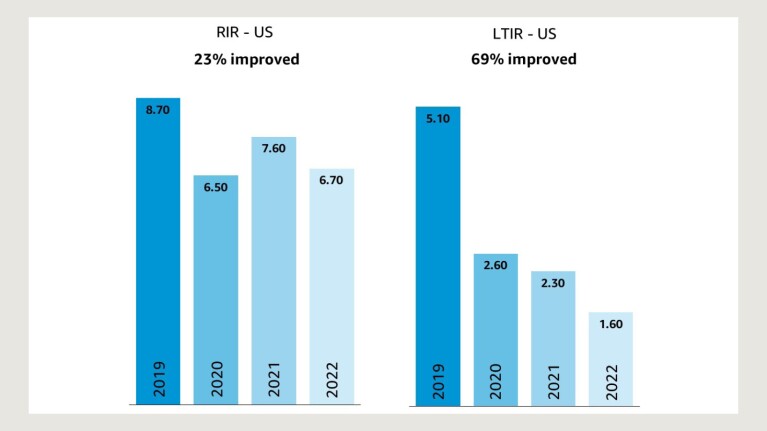
The three main metrics used to measure safety in the U.S. are RIR (Recordable Injury Rate), DART (Days Away, Restricted, or Transferred) and LTIR (Lost Time Incident Rate).
- Recordable Incident Rate (RIR): RIR refers to how often an injury or illness occurs at work. Whether the injury is “recordable” depends on local occupational safety and health reporting requirements, and the rate is measured in injuries per 200,000 working hours. In 2022, work-related musculoskeletal disorders (MSDs), such as sprains and strains that are sometimes caused by lifting, twisting, reaching, or repetitive motions,constituted about 55% of all recordable injuries at Amazon. Of the remaining 45%, the majority were due to slips, trips, falls, and occasional objects that came loose and fell.1 Within RIR there are subsets including: Lost Time Incident Rate (LTIR) and Days Away, Restricted or Transferred (DART).
- Days Away, Restricted or Transferred (DART): DART measures injuries resulting in days away, restricted work, or transferred work. DART includes injuries that are relatively minor, such as a strain where an employee still comes to work and performs most of their usual tasks.
- Lost Time Incident Rate (LTIR): LTIR refers to the number of injuries and illnesses that result in at least one day away from work. This metric thus measures the more serious injuries that have the most significant impact on employees, which cannot be accommodated by placing the employee under certain work restrictions or assigning the employee to a temporary work assignment in accordance with their treating physician’s instructions.
At times, we’ve seen outside groups with ulterior motives claim that Amazon’s injury rates are “double the industry average,” which is not correct. The process used to create this claim, by manually compiling data that companies report to OSHA for only one reporting category (“warehousing and storage”), calculating an average, and then removing Amazon from the average, is based on incomplete data. The problem is that many large companies that should be included in the calculation—companies like Walmart, Target and Costco—report almost all of their injuries under different reporting codes. As a result, the asserted “industry average” actually represents only a small subset of the companies that have businesses similar to ours, and it is, therefore, inaccurate.
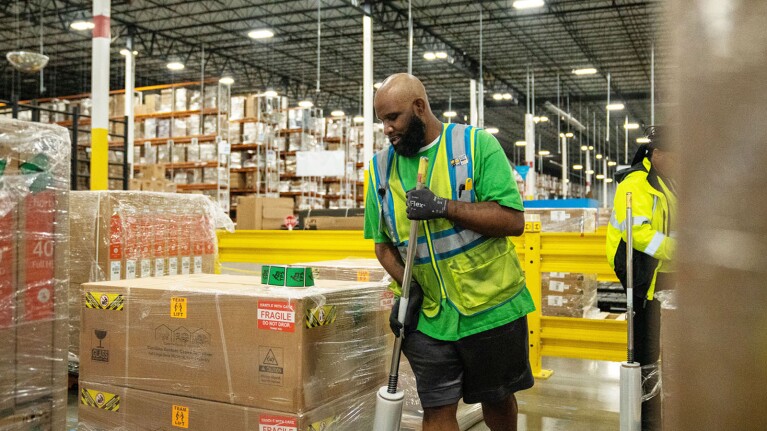
When you take the average cited by these groups and then add in Walmart, Target, and Costco, the “industry average” for the U.S. in 2022—without Amazon included—is 5.72 for RIR and 2.68 for LTIR, based on what’s reported to OSHA. By comparison, Amazon’s figures for our warehouses in the U.S. are 6.96 for RIR and 1.11 for LTIR based on our OSHA logs. This more accurate comparison shows that Amazon is slightly above the industry average for RIR and less than half the industry average for LTIR. For transportation, UPS reported an RIR of 8.71 and an LTIR of 2.96, and FedEx reported an RIR of 7.59 and an LTIR of 5.22, based on what’s reported to OSHA. For reference, Amazon is 6.87 and 3.57 for the Courier and Express Delivery category. As you can see, depending on the industry code and the specific metric, sometimes we’re higher, and sometimes we’re lower than other companies, but to paint us as significantly worse than the rest of the industry simply isn’t true. At the same time, our goal isn’t to be average—we want to be best in class compared to our peers, and we are optimistic about our continued progress so far this year.
We’ve also heard some people claim that our warehouses are “uniquely dangerous,” which is again inaccurate. This characterization appears to be based on allegations that a large percentage of Amazon warehouse employees’ injuries in 2022 were “serious” in nature. But that incorrectly conflates “serious” injuries with what’s called the DART rate. OSHA does not define DART as a measure of “serious” injuries, and we believe that LTIR is the better metric for understanding the frequency of the most serious injuries because that metric accounts for all injuries that actually require time away from work. As noted above, Amazon has substantially reduced its LTIR rate over the last four years and is lower on this dimension than most comparable companies.
And finally, some people have suggested that the increase in RIR from 2020 to 2021 suggests that our rates are increasing overall. That is again inaccurate. The pandemic was the most significant workplace safety challenge in a century and, like other companies in the industry, we saw an increase in our RIR between 2020 and 2021. Much of this increase was due to hiring 400,000 additional people in the United States to help us meet unforeseen demand and deliver essential goods when people needed them most.2 In our experience, there tend to be higher injury rates among workers in their first few months on the job. As discussed above, the overall trend line in RIR and LTIR from 2019 to 2022 shows substantial reductions.
Our safety initiatives
Amazon takes a comprehensive approach to safety. At our facilities, shifts regularly start with a safety tip or some other discussion about safety. At all levels of the company, mitigating risk and improving safety outcomes are key imperatives in decision making. Our safety program is supported by over 5,000 safety and health professionals in the United States, whose core responsibility is reducing risk and keeping employees safe. Below is a description of some of our key safety initiatives.
Safety improvements to work processes and new technologies
Amazon is committed to continually evaluating and improving work processes to reduce the risk of injury. This includes redesigning workstations and introducing new technologies, such as robotics, to relieve strain on employees and improve safety outcomes.
Ergonomic design
Like all companies with warehouse operations, one of the most important aspects of improving safety outcomes is reducing musculoskeletal disorders (MSDs)—such as strains, sprains, and lower back injuries—which are the leading cause of workplace injury across the transportation and warehousing industries. According to leading health organizations, including the World Health Organization and the National Safety Council3, MSDs affect nearly one-quarter of the global population and can occur at work or at home. These injuries are sometimes caused by repetitive motion, such as lifting and lowering objects, or improper posture when working.
Amazon has devoted considerable effort and resources to improve ergonomic conditions and reduce MSDs. We employ an Ergonomics Engineering team that includes certified professional ergonomists who make use of industry-leading digital human modeling software to assess ergonomic risk. This team studies, proposes, and helps pilot innovations (such as engineering and administrative controls) to reduce MSDs. Amazon also has taken an industrywide leadership role by entering into a five-year partnership with the National Safety Council that focuses on reducing MSDs by engaging key stakeholders, conducting research, inventing new technology and processes, and scaling the results.4
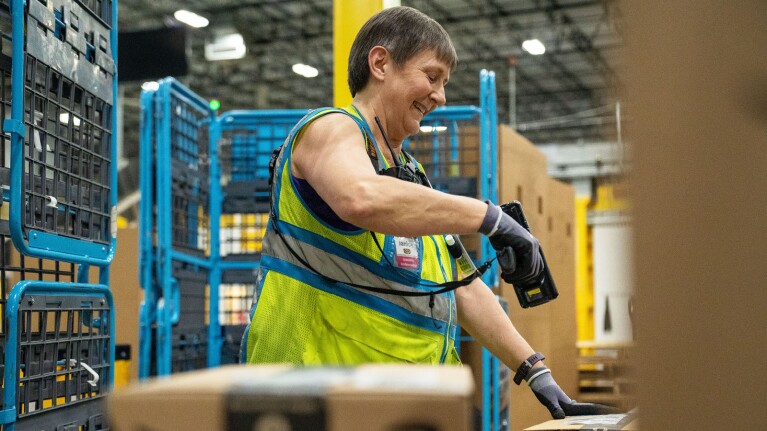
Below are some of the recent measures that we have adopted or are in the process of adopting to reduce MSDs and other injuries:
- ErgoPick: This program increases the number of products that employees pick from heights that are between their shoulders and thighs, and reduces picks outside of that zone. To reduce the number of high reaches or low bends, it is ideal to perform as many work duties as possible in the area known as the “golden zone.”
- Height-adjustable workstations: We have introduced height-adjustable tables in multiple process paths to help ensure that employees can work at a height that is comfortable and safe, and to reduce the need for twisting, bending, and reaching.
- Job rotation: Rotation to different tasks and positions can reduce fatigue and ergonomic stress, and thus, help reduce the potential for MSDs in the workplace. In buildings where the program has been deemed feasible and deployed, the job rotation program matches employees with complementary jobs to reduce repetitive motion by using opposite muscle groups. We continue to evaluate process paths that can be added to the job rotation program.
Technological and equipment improvements
Amazon is continually introducing new technologies and improvements in safety equipment to decrease the risk of injury. These innovations can help raise the bar on safety across the industry. Examples include:
- Improving powered industrial truck safety: Many of our employees use powered industrial trucks to move pallets and other large items. Our goal is to reduce serious incidents involving powered industrial trucks to zero, and this year we are committing $100 million to improve powered industrial truck safety. To do this, we are partnering with manufacturers to develop and deploy technology to improve safety. For example, we are implementing collision-avoidance technology at various sites, which uses light detection and ranging, as well as a real-time locating system, to sense and avoid collisions and improve workplace safety. In 2021, we received the National Safety Council’s Green Cross Award in recognition of our innovative solutions for reducing injuries caused by powered industrial trucks.
- Freezer sensors: For employees whose jobs include working in freezers, we use sensor technology to limit the amount of time an employee can spend in the freezer before taking a break. If an employee exceeds that time, site personnel receive a real-time alert to intervene. Since introducing this technology in 2022, we have not had a single recordable injury related to overexposure in freezers. In 2021, the NSC recognized Amazon with an Innovation Award for this technology.5
- Intelligent safety vests: We have developed intelligent safety vests to improve the safety of our technicians who work alongside robots; this innovation has been deployed at all robotics facilities. These vests send signals to robots in real-time so that robots in range automatically slow down and alter their route. At even closer range, robots stop entirely when they detect that an employee is in proximity.
- Other safety gear: We are continually evaluating the introduction of additional safety gear to improve our employees’ safety at our facilities. For example, in 2022, we introduced a safety shoe requirement and since then, we have reduced toe fractures by 81%. We provide employees with a $110 annual credit to purchase protective footwear and insoles.
Robotics
Amazon is innovating in the area of robotics to simplify tasks, help reduce strain on our employees, and ultimately reduce the risk of injury. These innovations reduce the need for various types of repetitive motions, such as reaching, bending or climbing to access inventory items, or pushing heavy carts and trolleys between areas. This allows employees to be assigned to other tasks that carry a lower risk of injury.
Our data show that, in 2022, the recordable injury rates (RIR) and the lost time injury rates (LTIR) at non-robotics-enabled sites were 18% and 21% higher than at our robotics sites.
Examples of robotic innovations include:
- Lifting and transporting carts: We are piloting robots that can autonomously lift and transport carts. The robot is equipped with advanced safety, perception, and navigation technology, such as the ability to emit a light beam and stop if someone steps in front of it.
- Package sorting and handling: Another example is a robotic arm that automates package sorting and handling, which reduces the need for employees to lift heavy packages or maneuver heavy carts. We are currently testing a prototype that is able to lift boxes up to 50 pounds.
- Containerized storage systems: We are piloting a robotic and automated containerized storage system that eliminates the need for employees to bend, climb, or reach for inventory items. The system locates the container with a customer’s ordered product and either grabs the item from the container autonomously or passes the container directly to the employee in an ergonomically friendly position.
Safety training and conditioning
Employees are provided with critical safety information on their first day of employment, followed by job and process path-specific training. This training covers proper body movement techniques (for example, related to reaching, bending, and lifting), incident reporting, seeking treatment for an injury, and avoiding hazardous equipment. In 2022, we enhanced our safety training to focus on scenario-based learning that fosters higher engagement and promotes practical skills. And this year, we have made additional training enhancements. For example, we have distributed our employee annual safety refresher in multiple smaller-scale training sessions to increase knowledge retention. We also have enhanced our annual training to strengthen our operational leaders’ safety leadership skills, including helping leaders have safety-centered conversations with employees.
Ongoing employee engagement and feedback on safety
We believe in the importance of continuously engaging our employees on safety and providing multiple avenues for obtaining their feedback, questions, and suggestions.
In 2018, we developed the Safety Leadership Index (SLI) to collect direct feedback about safety and working conditions from employees and front-line managers. We solicit information by asking employees a series of safety-related questions that pop up on employees’ scanners and computers when they log in for work. Those questions rotate every month, and include, for example, questions about their team leaders’ safety commitment, awareness, structures, involvement, and accountability. Feedback is anonymous and confidential. In 2022, we engaged over 1 million employees through SLI in the United States.
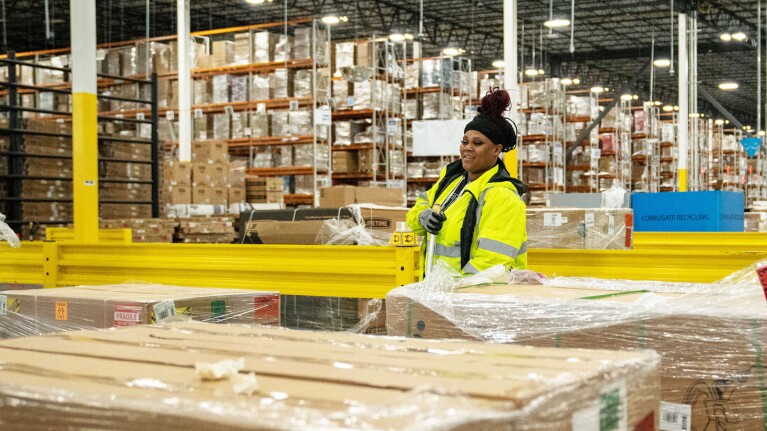
In 2022, we began rolling out our enhancement of our employee-led safety observation program to make it easier for employees to report safety concerns and suggestions through a digital app. Under this program, employees can identify risks and hazards specific to their work areas and speak up about safety concerns. Any employee reports are then assigned to their manager for follow-up. Managers have reported that this program has resulted in meaningful safety conversations with employees.
Amazon employees can also join Associate Safety Committees, which meet monthly with management to share safety ideas and discuss trends. In 2022, over 183,000 Amazon employees in the United States participated in almost 9,000 such meetings.
Wellness Services Program
Through our Wellness Services Program, Amazon is proud to offer on-site first aid services to employees at various U.S. facilities, which exceeds the practice of most companies. At these facilities, the physical space in which this first aid is offered is called a Wellness Center (in newer Amazon facilities) or Amcare (at other facilities).
Our Wellness Centers and Amcare locations are staffed by over 1,200 onsite medical representatives (OMRs), over 90% of whom are trained emergency medical technicians (EMTs). OMRs are required to follow a detailed procedure manual, and they are not permitted to provide medical diagnoses or to discourage employees from seeking medical care. At any time, an employee is permitted to seek medical care off-site. Also, OMRs do not have the authority to excuse employees from work or to send employees back to work.
We also have over 200 Injury Prevention Specialists (IPSs), who are educated as athletic trainers and first aid providers and work at many of our facilities. They proactively engage employees on ergonomic topics, such as proper body movement and general health and wellness. They also speak at new hire orientations and perform facility walk-throughs with operations leadership to identify ergonomic risk. IPSs are also available to support OMRs in providing first aid care.
Mental health
Amazon offers a range of mental health support services, including the Employee Assistance Program,6 health plan benefits for mental health and substance use conditions, and mental health awareness training for managers and employees. In 2022, we delivered mental health awareness training to tens of thousands of managers, helping to equip them for when mental health concerns arise at work. Amazon has also enhanced its program to offer employees and their families additional mental health resources, including guided programs, mental health coaching, and free counseling sessions—both in person and virtually.
Amazon is proud to have been awarded the Platinum Bell Seal for 2023 by Mental Health America (MHA).7 This is the highest level of recognition by MHA and is awarded to employers that provide access to mental health resources, promote a culture of wellness, and implement policies and practices that support the mental health of employees.
As described above, we’ve invested significantly in safety and are proud to have achieved a substantial reduction in injury rates in recent years. But despite our progress, we’re not content with the status quo and we’re committed to continuing to invest and innovate to further improve employee safety in months and years ahead.
1. While RIR, which is an OSHA statistic, is informative, it was designed for general tracking of illness and injury prevalence, not for measuring safety performance. RIR does not differentiate between a minor injury, such as a cut that requires stitches, and a serious injury, such as a bone fracture.
2. During this period, our percentage of employees who had been in their roles for less than six months increased from 39% to 51%.
3. The National Safety Council is a leading nonprofit dedicated to advocating for workplace safety. Musculoskeletal Disorders Cost Employers Billions, National Safety Council, https://www.nsc.org/workplace/safety-topics/msd. See also Musculoskeletal Health, World Health Organization, https://www.who.int/news-room/fact-sheets/detail/musculoskeletal-conditions
4. SeeAmazon, NSC Create First-of-its-Kind Partnership to Solve Most Common Workplace Injury, National Safety Council (June 10, 2021), https://www.nsc.org/newsroom/amazon-and-nsc-create-first-of-its-kind-partnership
5. https://www.nsc.org/newsroom/nsc-honors-three-organizations-with-green-cross-aw
6. The EAP is a free, confidential counseling and referral service available via telephone at all hours, every day to all Amazon employees and their family members. The EAP also provides free phone consultations for financial matters, life or wellness coaching sessions, mindfulness programs, online webinars, and the Twill Therapeutics app and platform.
7. Mental Health America is a leading nonprofit dedicated to the promotion of mental health and wellbeing through education, research advocacy, and direct services.

